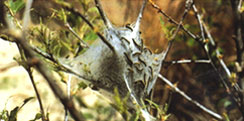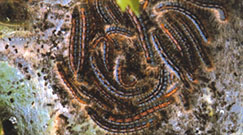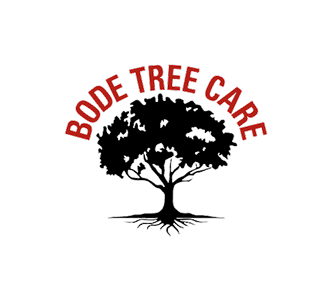
A well-trained arborist can identify and effectively treat the Insect & Disease problems. There are many conditions caused by insects or Diseases in trees. A Bode Tree Care certified arborist can advise you about prevalent insect infestation and disease infected areas and the effective course of treatment for each.
Complete
Insects Management Programs
Tree insect problems
Prairie Tent Caterpillar
Mostly found in Chokecherry, plum, willow, ash, poplar, and rose trees. Mature larvae are 50 mm long and can be quite variable in pattern. In general, most prairie tent caterpillars are pale blue with an interrupted white stripe bordered by two reddish-orange stripes down the center of the back. Eastern tent caterpillars are similar but have a continuous white stripe down the back and black heads. Moths of both species are reddish-brown, have two oblique whitish stripes on the forewings and have a wingspan of 37 to 50 mm.
Eggs hatch when the first new leaves appear. Larvae live in colonies and construct large silk tents around a fork or branches of trees. These tents are enlarged as the larvae grow, enclosing the entire branch or even the entire tree. Adults of prairie tent caterpillars emerge in late summer (August in Nebraska) and lay flat egg masses on twigs and branches. Adults of eastern tent caterpillars emerge in June and early July. There is one generation per year.
Larvae skeletonize leaves outside tents. Infestations tend to be spotty and are often unrecongnized until entire trees have been defoliated. Severely infested trees are less vigorous and unsightly, but are rarely killed.
prairie tent caterpillar nest

prairie tent caterpillar larvae

Photos courtesy of The Nebraska Forest Service –
Nebraska University www.nfs.unl.edu
Eric Bode
Certified Arborist IL-4572A
Contact
Bode Tree Care
Today for an estimate

Bode Tree Care
P.O. Box 612 Barrington, IL 60011
eric@bodetreecare.com p: 847-909-2100 f: 847-381-7350